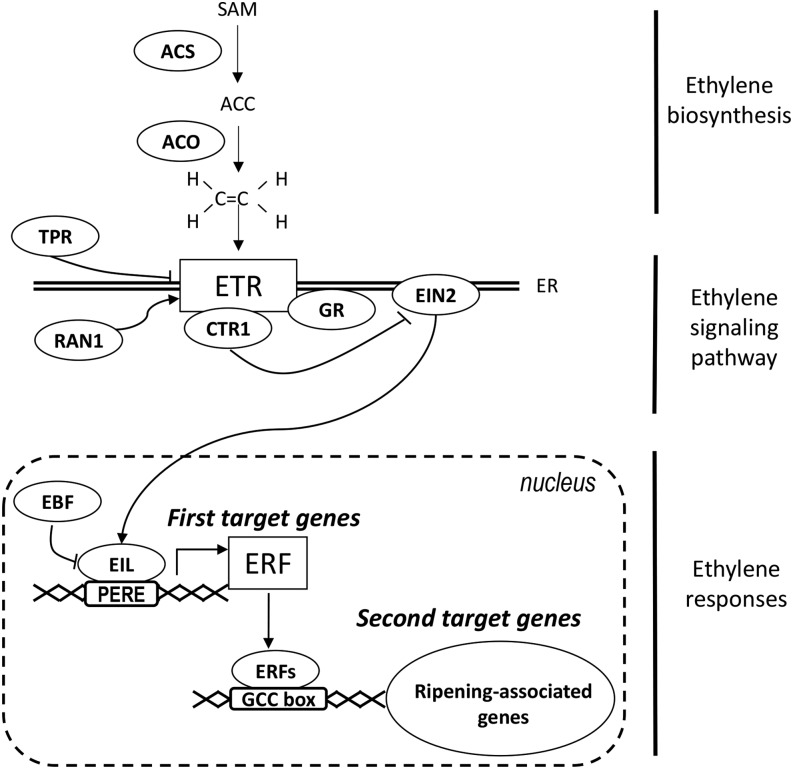Figure 1.
Simplified scheme showing ethylene synthesis and response in tomato. Ethylene synthesis results from the activity of 1-aminocyclopropane-1-carboxylic acid (ACC) synthase (ACS) and 1-aminocyclopropane-1-carboxylic acid oxidase (ACO), which transform S-adenosyl-l-Met (SAM) into ACC and convert ACC into ethylene, respectively. Ethylene is perceived by the receptor proteins (ETR), located in the endoplasmic reticulum (ER). RAN1 delivers the copper cofactor required for ethylene binding. GR is probably associated with the receptor and mediates the receptor signal output. It is suggested that TPR binds to ethylene receptors and leads to receptor degradation. The receptors are negative regulators of ethylene signaling, and in the absence of ethylene, the receptors activate Constitutive Triple-Response1 (CTR1), which suppresses the ethylene response via inactivation of Ethylene Insensitive2 (EIN2). The transcription factors EIN3/Ethylene Insensitive3-Like1 (EIL1) undergo a degradation process mediated by the Ethylene Insensitive3-binding F-box (EBF) proteins. In the absence of EIL, transcription of ethylene response genes is shut off. Ethylene binding to the receptors induces their inactivation, and by consequence, switches off CTR1 phosphorylation activity. Active EIN2 stabilizes EIL transcription factors, which can activate the expression of target genes, including those encoding the ERF transcription factors via binding to primary ethylene response elements (PEREs; Solano et al., 1998). ERFs, in turn, modulate the transcription of ethylene-regulated genes through binding to GCC-box type cis-elements present in their target promoters. Arrowheads represent positive regulatory interactions, and bar heads represent negative regulation.

